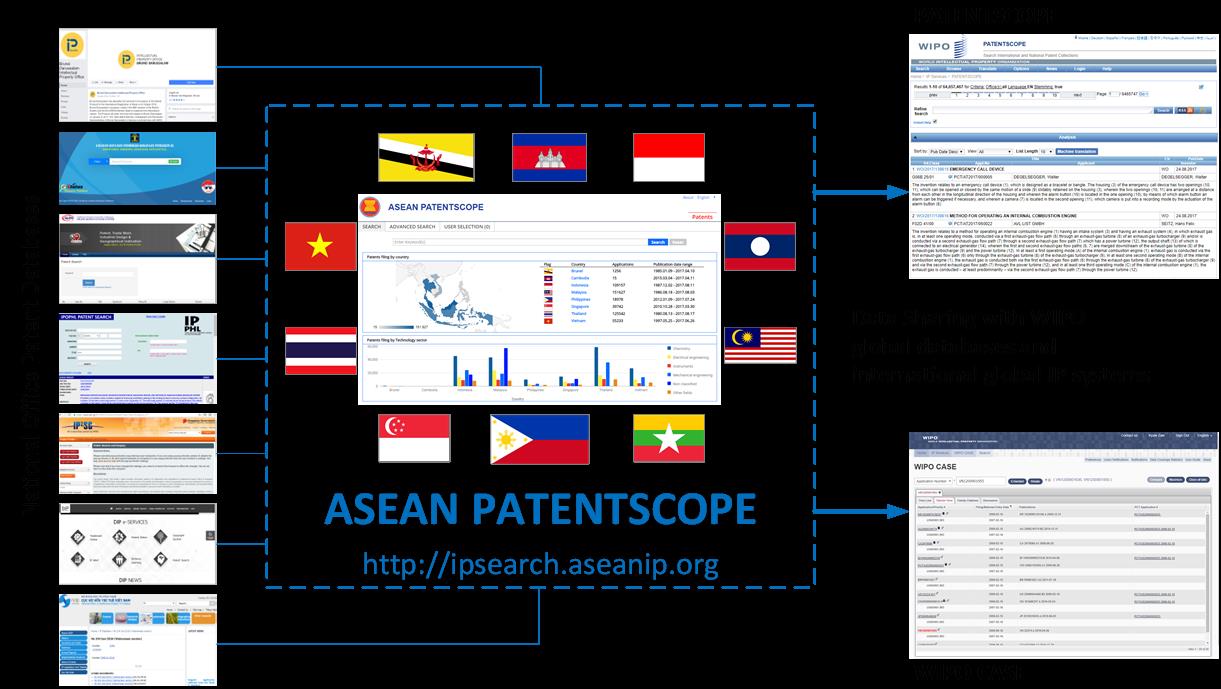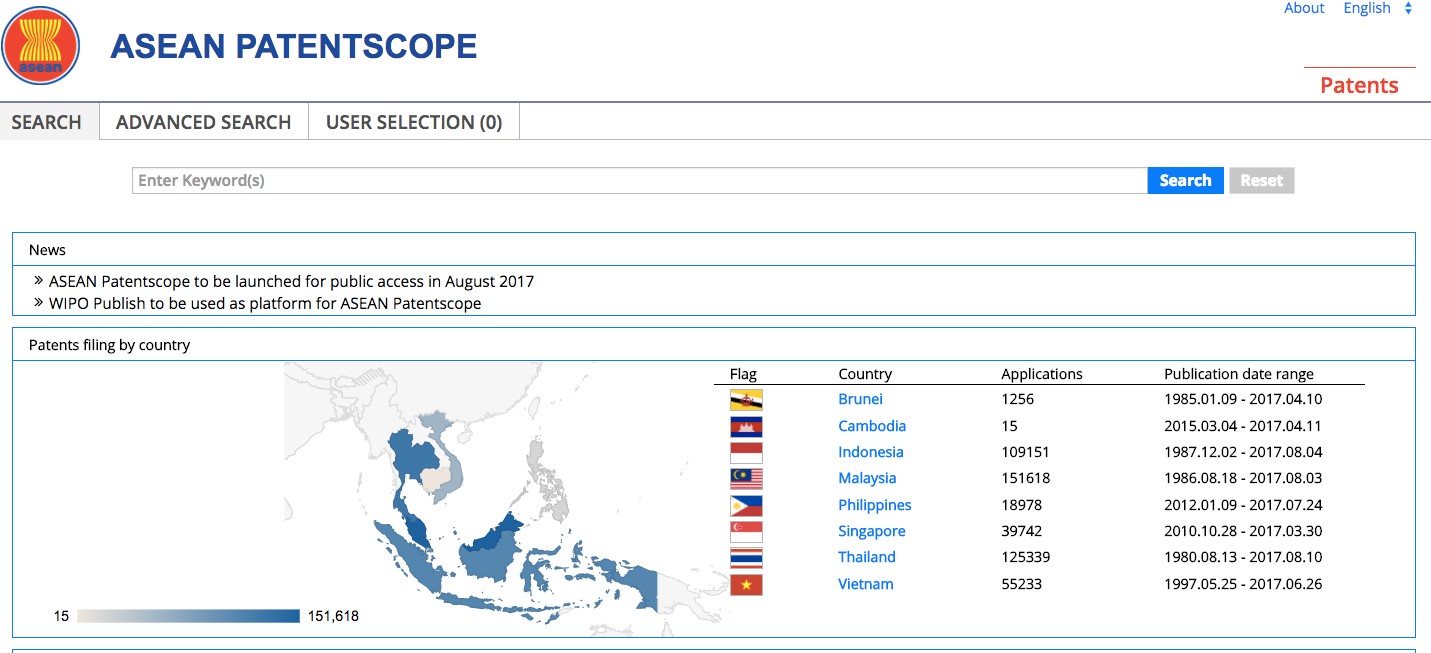Public Rollout of ASEAN PATENTSCOPE Service
The first online platform for access to quality regional patent resources was launched publicly on 29 August 2017.
28 August 2017

Boosting ASEAN Innovation and Technology Capacities
The ASEAN PATENTSCOPE project was initiated by the ASEAN Patent Examination Cooperation (ASPEC) Task Force in 2012 and endorsed by the ASEAN Working Group on IP Cooperation (AWGIPC) in 2015 in order to enhance regional collaboration on research and development (R&D) activities and to encourage technological development among ASEAN countries.
The availability of online patent data is one of the most important facilities to bring government services closer to innovators because they no longer have barriers of distance and complicated paper search to access quality technology and innovation resources. The public can access the ASEAN PATENTSCOPE, now enhanced to the ASEAN IP Register, anywhere, any time.
Technology and innovation have been a game changer and a major disruptor on how we spend our daily lives. This AWGIPC initiative will enable ASEAN to step up the innovation ladder and encourage innovators in the region to use the patent system for enhanced participation in regional and global business.
Successful Cooperation between ASEAN and WIPO for Development of Wider ASEAN Innovation Infrastructure
For the first time, a regional patent database service owned by ASEAN has been made available to the public. Indonesia has contributed extensively for the project by hosting the regional patent database server. Singapore also played its leadership role to initiate the project through its chairmanship of the ASPEC Task Force.
The move builds on the ongoing ASEAN-WIPO collaboration to leverage WIPO software to support ASEAN innovation. The platform will enhance innovation capacities in ASEAN and enable stakeholders, regardless of location, with access to quality technology resources.
Since the official launch of the platform at the 53rd AWGIPC Meeting held on 17 July 2017 in Hanoi, Vietnam, the portal’s basic functions have been on trial at pilot offices. WIPO has been in close cooperation with several ASEAN IP Offices to gather feedback and further develop the platform before its public rollout.
Need for Access to Quality ASEAN Regional Patent Data
The ASEAN Economic Community (AEC) Blueprint 2025 seeks to create a competitive, innovative and dynamic region by fostering the creation and protection of knowledge. The ASEAN PATENTSCOPE platform reinforces this goal by enabling access to disclosed technologies contained in patent information.
ASEAN doubled its share of the world’s scientific literature from 1.37% (2006) to 2.43% (2015) according to the Asian Scientist (2016). Malaysia, Brunei and Vietnam have all sharply increased output of research papers. WIPO Statistics also indicates that patents in ASEAN have increased more than 40% in last three years. Similarly, international PCT filings have increased four times in last ten years. Resident patent filings, where innovators filed for protection in their home economy, have risen from less than 9 % in 2014 to nearly 12.5% in 2015. The development of the ASEAN PATENTSCOPE, therefore, responds to the tremendous need for an online platform to access technological information in the region.
Data Coverage and Link with WIPO PATENTSCOPE Service
The ASEAN PATENTSCOPE offers free access to over 500,000 ASEAN patent documents with complete patent family data. The coverage will be expanded when the data management project is complete at two more ASEAN IP Offices. The portal will be directly linked to the WIPO PATENTSCOPE service, which is WIPO’s global patent database portal, hosting 65 million patent documents including 3.2 million published international patent applications (PCT).
ASEAN PATENTSCOPE Service Functionalities
The ASEAN PATENTSCOPE provides a number of powerful tools and features to assist users. These include bibliographic data search, view of published patent dossier information, search results in a customisable report, and translations into national languages. By simply entering a term or a phrase in English, it is possible to retrieve relevant patent documents, country-level patent filings by technology sector and related patent family in the region.
The system that was developed in the framework of this project is modern and effective and should make a substantial contribution to enhanced access to the ASEAN regional patent information.



